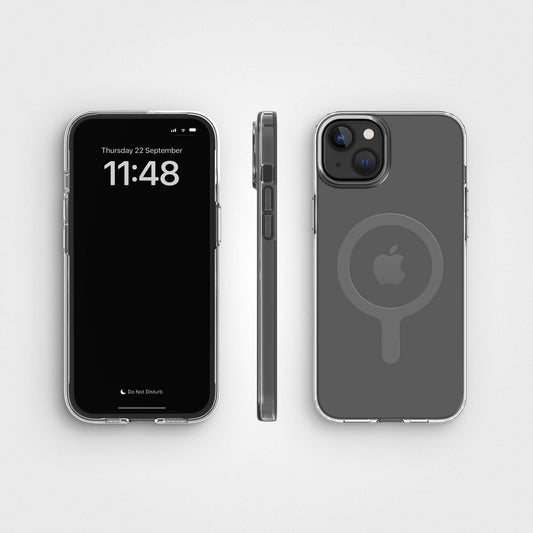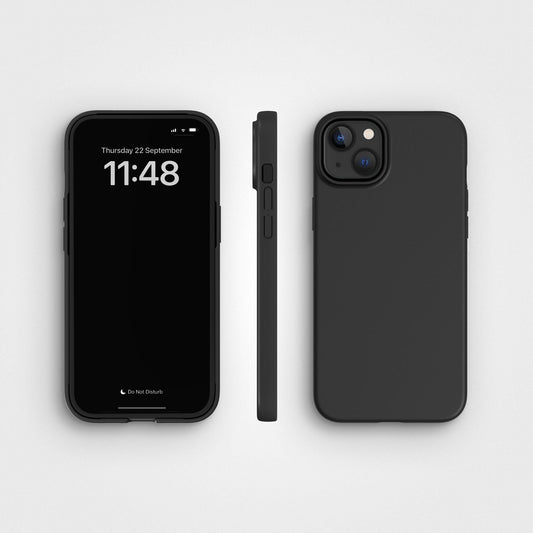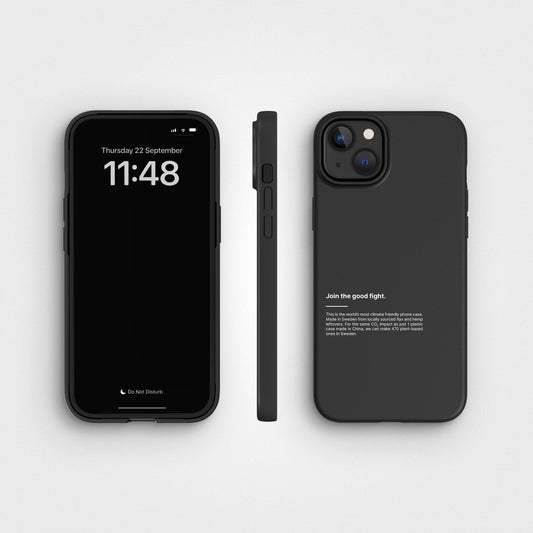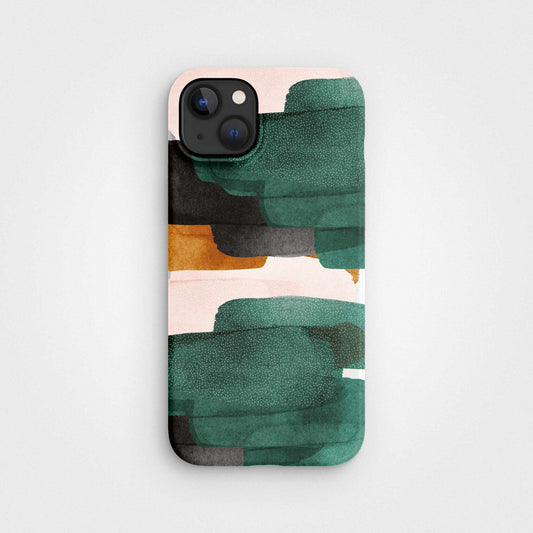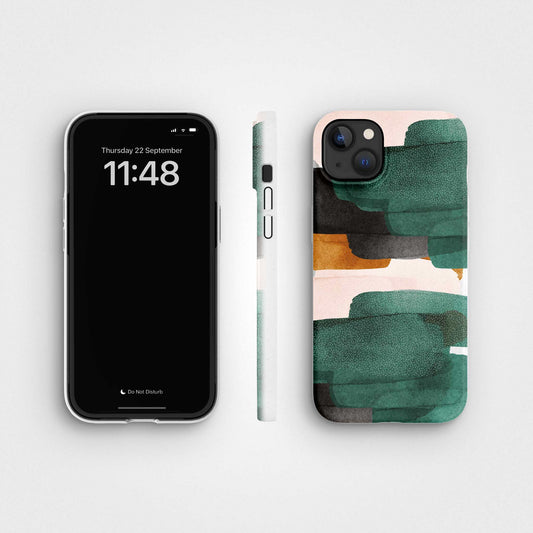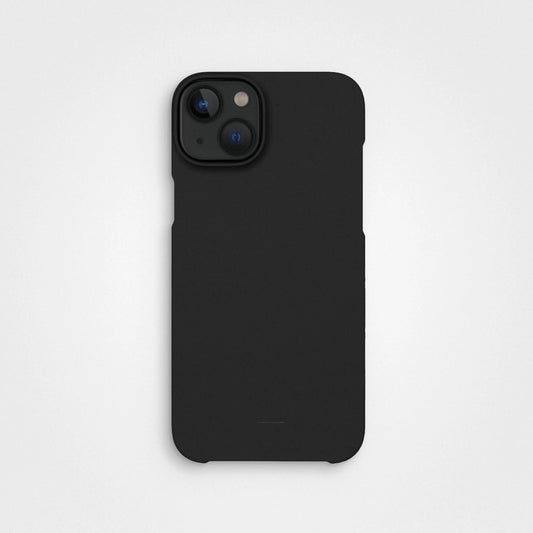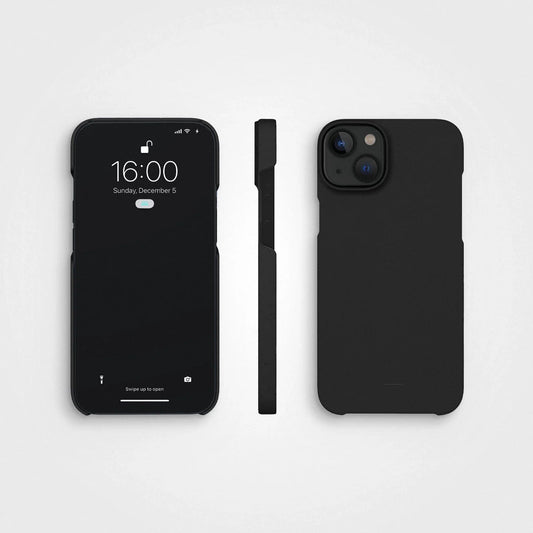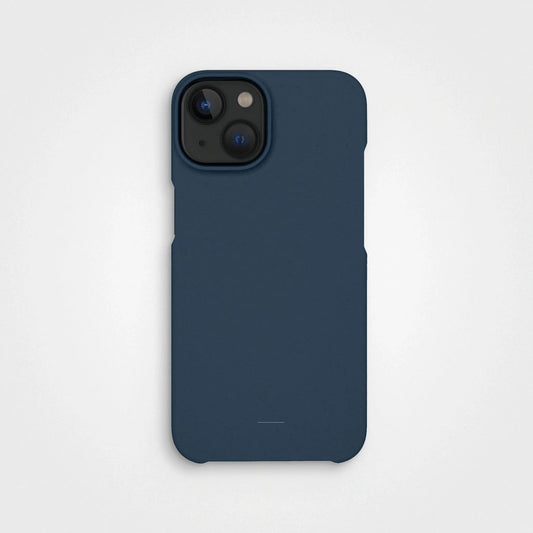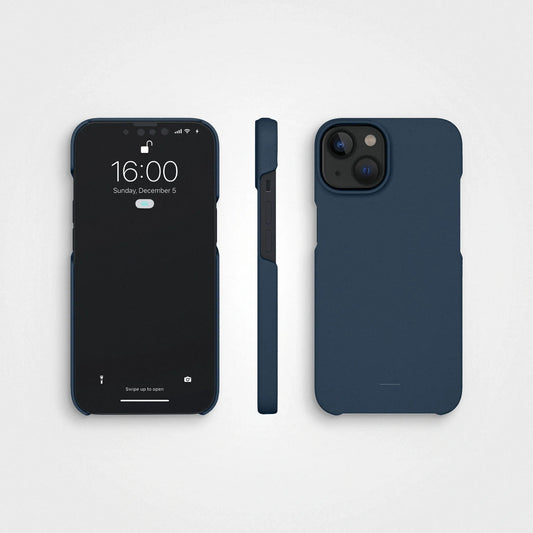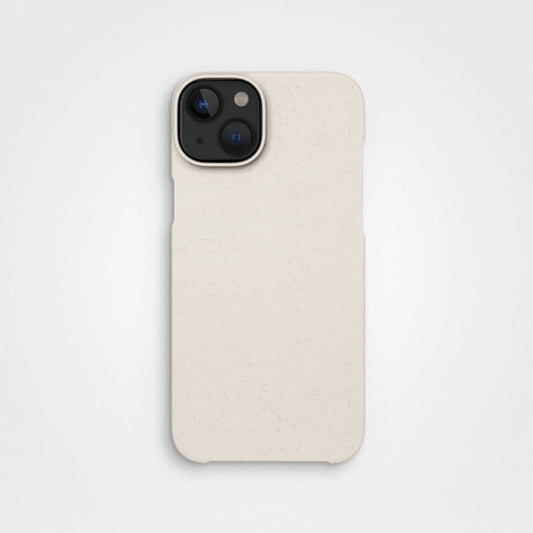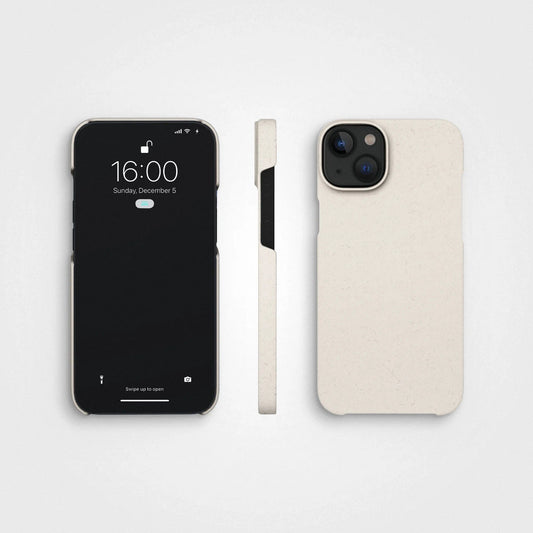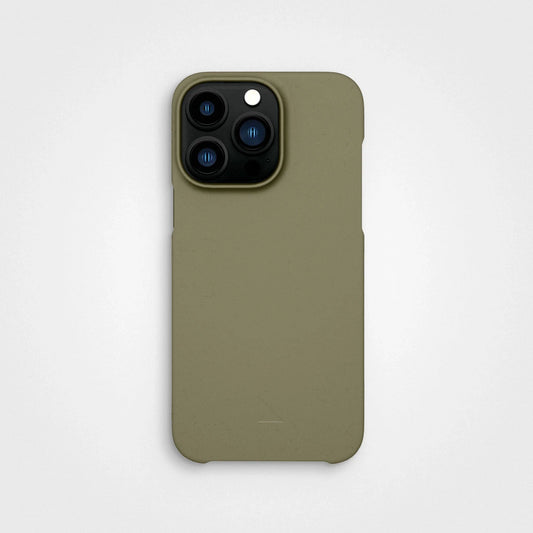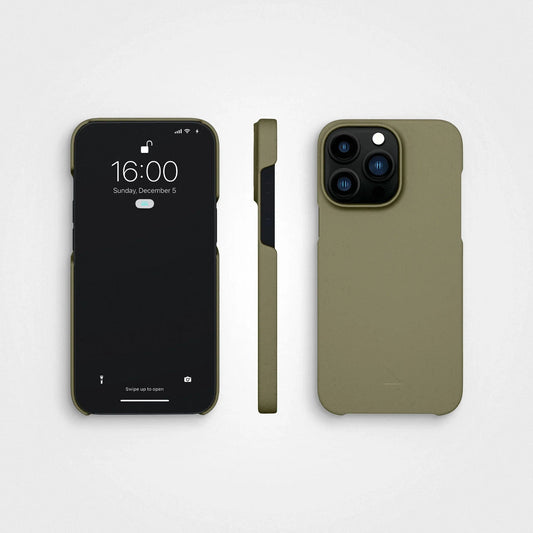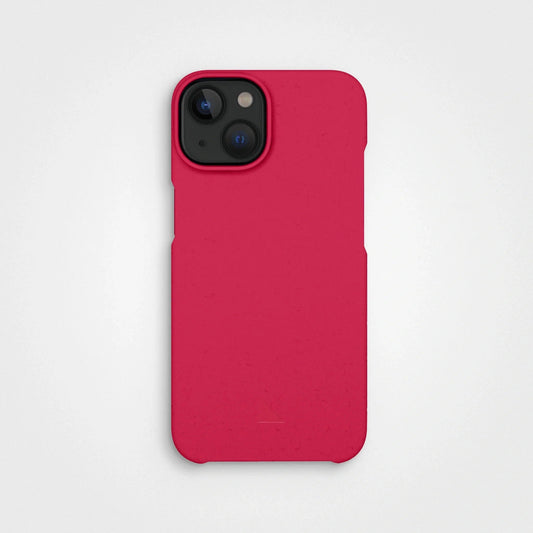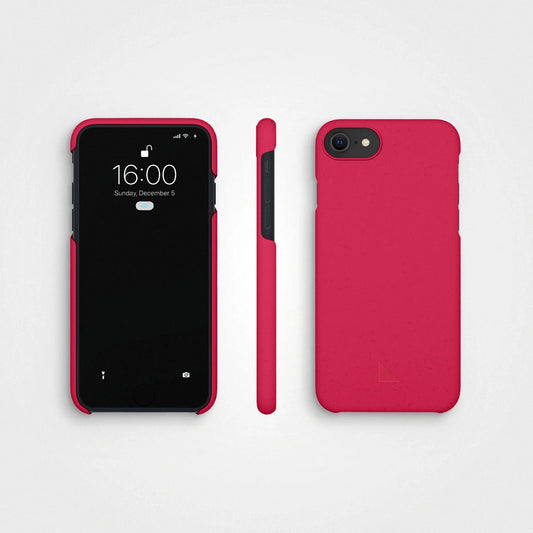At agood company, we’re not just making products - we’re challenging the status quo. We’ve built our entire business around sustainability, replacing plastic with plants, and crafting notebooks from stone. We’re here to inspire change by creating beautiful, functional, eco-friendly alternatives that prove doing good can also look good. That’s why our latest collaboration with Brooklyn-based artist Mike Perry is the perfect match.
Exclusive interview: Mike Perry
Artistic vision on agood company's circular phone cases, notebooks, and bottles
Mike Perry, known for his neon-soaked, abstract designs, has worked with some of the biggest names in the world, from Hermès to Broad City. His artwork transforms everyday spaces into bursts of color and curiosity, and now, for the first time, his creations will be carried on our sustainable products. We asked Mike to dive into his creative process - what sparks his imagination, and how his designs will take on new life in the form of plant-based phone cases, stone paper notebooks, and recycled steel thermal bottles.
Read this interview to discover the vision and the person behind the design, so every time you look at your new plant-based phone case or notebook, you'll know the creative journey that brought it to life.
1. When you start a new project, what usually comes first for you - an image, a color palette, or a broader concept? How does that process unfold?
Every project is different, but ultimately most things start in the sketchbook. I spend a lot of time working in the sketchbook, just thinking and exploring and really just having fun and playing. So when I have a new project that I have to jump into, I try to think about what I have been working on currently or ideas from the past that seem relevant to what this new project is. I then just start sketching, start playing and see what happens. The color palette is always something that is exciting, especially when I'm thinking about something that has printing challenges or things to be cautious of. Yeah, the sketchbook is king.
2. You've worked with a wide range of media - from murals to television intros. What challenges or opportunities do you see when translating your art into different formats?
The biggest challenges often come down to time and technicalities, regardless of the medium. For example, with murals, you’re always working against the clock. You have to consider how large the wall is, what material it’s made from - whether it’s brick or concrete - and how that will impact your approach. These elements are crucial to making decisions about what the final piece will look like.
Similarly, with television intros, time is a constant constraint. It’s not just about the duration of the animation - how many seconds or minutes you have to work with - but also the timeframe you have to execute the idea itself. Both murals and animation are incredibly time-consuming and require meticulous attention to detail.
Weirdly, time ends up being the main factor in everything I do. Whether it’s creating a painting or developing a complex animation, I always think of it as pushing minutiae around to form an image, to bring something to life. So each format offers different challenges and results, but at the core of it all is time. It’s the key variable that shapes everything.


3. Given your versatility in art forms, how do you decide what medium or project you want to work on next? Does intuition or external influence guide you more?
There’s almost a wanderlust to my creative process. I like having a variety of projects happening at once so I can move between them based on what feels inspiring in the moment. So, I’d say intuition definitely plays a major role. It’s more about thinking, “This is what I feel like working on right now - let’s do it.”
But external influences are always in the mix, too. If I’m working on a commission, for instance, time becomes a significant factor, and I have to consider deadlines and constraints. Even the weather can impact what I decide to work on. If it’s a beautiful day, I might want to be outside painting - something that’s not as feasible if it’s snowy and cold.
So, ultimately, it’s about going with the flow, balancing what feels right to work on with the realities of the world around me, and then jumping into whichever project aligns with that moment.
4. You’ve collaborated with some very different brands and industries - from luxury fashion to entertainment. What’s the most unexpected thing you’ve learned from these diverse experiences?
Every brand collaboration is a learning experience, whether it’s about understanding how a company operates internally or observing how confident they are in their own creative vision. Sometimes it’s a positive thing, where a brand trusts and believes in me as a creator. Other times, there’s hesitation and second-guessing, which I totally understand - it’s a complicated world out there. But I’ve found that when a brand puts trust in someone, it often leads to better results.
That’s not to say it’s always smooth. There have been many situations where I’ve had people working with me who needed guidance and care to build their confidence in their own vision. But seeing that process unfold is valuable, and I’ve learned to cherish it.
What stands out most to me from these experiences is what’s possible when you have a lot of people coming together to bring an idea to life. A few years ago, I worked on a musical for Hermès called Love Around the Block. It was an incredible experience because everyone involved was so dedicated and thoughtful about their role and responsibilities. To me, that was beyond inspiring, because it allowed me to trust everyone’s contributions, and the project soared as a result.
In an era where creatives are not always seen as integral to a brand’s business strategy, it can really hurt the end product. But when a brand genuinely trusts the creative process, it results in something truly epic.


5. We know you worked with Spotify, so music must play an important role in your life and work. If your work had a soundtrack, what songs or genres would it feature?
I’d say if there’s one song that captures the essence of what I make, it’s Coconut by Harry Nilsson. It’s happy, weird, rhythmic, and hypnotic, with a built-in repetitive pattern - qualities that really resonate with my creative process. The song gives me an inexplicable sense of joy, and I love how unapologetically playful it is. Plus, it’s a blast to sing at karaoke because you get to just go all out and shout the word “coconut” over and over. It’s fun, a little offbeat, and full of energy - just like my work.


6. Art can often be a collaborative effort. How do you maintain your distinct artistic voice while working on projects with large brands or in collaborations like this one with agood company?
I approach every project with the same intensity and dedication, whether it’s a personal painting, a musical for Hermès, an animated title sequence, or a TV pilot. I always go all in, putting everything I have into what I’m creating. That’s how I maintain my voice - by showing up as myself, no matter the context. It doesn’t mean everything always works out perfectly, but I know I’ve given it my best effort, and that’s really all I can do. From there, I just hope for the best.
7. Your art will now be featured on everyday sustainable objects like recycled steel thermal bottles and stone paper notebooks. How does it feel knowing that people will carry your designs with them as part of their daily lives?
I mean, I love it. It’s beautiful and magical. One of the greatest pleasures of creating work that’s accessible to a wider audience is those unexpected moments when I walk down the street and see someone wearing something I made, or visit a bookstore and spot one of my books on the shelf. It’s a feeling that never gets old. Seeing my art become a part of people’s everyday lives like that - that’s the best.
One of my favorite projects that embodies this is Get Nude Get Drawn, which I created with my friend and collaborator Josh Cochran. It’s a live figure drawing event where strangers come and pose, and they get to take home drawings created during the session. We’ve done it about ten times over the past 15 years, and it’s always been such a fun and weird project.
What’s amazing is how often I’ll visit someone’s house - whether it’s a stranger’s or a new friend’s place somewhere in Brooklyn - and see one of those drawings hanging on the wall. It’s shocking how frequently that happens, and it’s such a lovely reminder of the connections art can create. Seeing those pieces out in the world makes the whole experience incredibly rewarding and reminds me of the impact art can have, no matter the medium.


8. Do you think the portability of your art on our products, such as a plant-based phone case, changes the relationship between the viewer and the artwork itself?
When everyday items like a notebook or a water bottle become integrated into your life, they become these reliable, essential companions that you can’t imagine living without. One of my favorite truths about existence is the concept of erosion - how everything we use bears the marks of our interactions over time.
For instance, if you look closely at my own water bottle, you’ll see the dents, the paint splatters, and stains - little records of my life and experiences. A notebook is an even more vivid example because every touch, every page turned, slowly breaks it in, making it a unique object that shows the path of your life.
So, yes, I think the portability of my art on objects like these changes the relationship between the viewer and the artwork. The art becomes something that’s lived with, something that’s marked and shaped by its use, making it even more personal. I don’t know - maybe that’s just me, but I love that idea.


9. What excites you most about having your art displayed on eco-friendly products? Do you think it adds a new dimension to the experience of your designs?
I think anything eco-friendly is a positive step forward, especially as we continue to develop these kinds of products as a society. It’s exciting to see more and more items become part of this economy - things that are not just less harmful but actually beneficial to the environment. That’s epic, and I look forward to more innovations like this becoming the norm. Having my art on products that align with these values definitely adds a new dimension to the experience. It’s a way for the work to resonate on a deeper level because it’s part of a larger commitment to sustainability.
10. For someone seeing your art on our plant-based phone cases or stone paper notebooks for the first time, what do you hope they take away from the experience?
I hope it simply brings a little happiness. Maybe it makes someone smile or adds a bit of joy to their day. For a water bottle, I’d love for it to make you want to take a sip and stay hydrated. And for a sketchbook, I hope it inspires you to get wild - open it up, make a mess, and bring your ideas to life. That’s the goal: to spark a moment of positivity and creativity, no matter how small.
Creativity and conscious living
By choosing our products, you’re investing in a vision. A vision that champions sustainability, bold design, and pushing boundaries. Every time you reach for one of our products, you’re carrying a piece of Mike Perry’s vibrant world and joining us in making a real impact on the planet. Don’t miss the chance to be a part of a movement where creativity and conscious living come together. Explore the Mike Perry collection now and make that vision your own.


